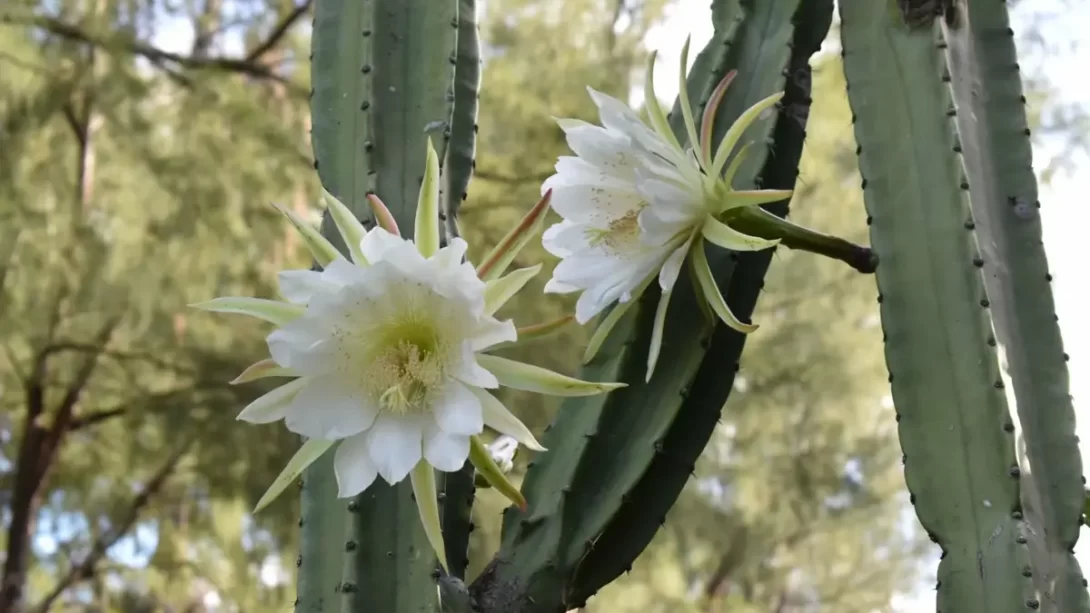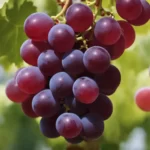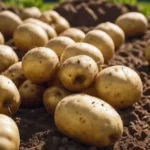The San Pedro cactus, scientifically known as Echinopsis pachanoi, is a fast-growing columnar cactus native to the Andes Mountains in South America. Revered for centuries for its traditional medicinal and shamanistic uses, this cactus has also become a popular ornamental plant worldwide. Accurate identification of the San Pedro cactus is crucial for gardeners, enthusiasts, and collectors, not only for its cultural significance but also to ensure proper care and cultivation. This guide will help you recognize the unique features of the San Pedro cactus and distinguish it from similar species.
Basic Characteristics of San Pedro Cacti
San Pedro cacti are known for their distinctive columnar shape. They are typically bright to dark green and have a ribbed structure with several vertical ribs running along the length of each column. Young plants may start as small, rounded cacti, but as they mature, they develop into tall, upright columns. These cacti can reach impressive heights, sometimes growing up to 20 feet tall in their natural habitat. In domestic settings, their growth may be more limited due to space and environmental conditions. Understanding these basic characteristics is the first step in identifying a San Pedro cactus.
Distinctive Features of San Pedro Cacti
A key feature of San Pedro cacti is their rib structure. Typically, a San Pedro cactus has 6 to 8 ribs, though the number can vary. These ribs are more rounded and less pronounced than those of some similar species. The areoles, or small, cushion-like areas from which spines emerge, are spaced evenly along the ribs. San Pedro cacti have relatively few spines, which are usually short, about 0.4 to 0.8 inches long, and range from yellow to brown in color. Some specimens may have almost no spines, particularly in cultivated environments. The presence of a woolly formation, especially near the top of the cactus, is another characteristic feature during the flowering season.
Comparing San Pedro with Similar Species
Identifying San Pedro cacti can be challenging due to their resemblance to closely related species. The Peruvian Torch (Echinopsis peruviana) and Bolivian Torch (Echinopsis lageniformis) are two such species that are often confused with San Pedro. The Peruvian Torch tends to have a bluer hue and more pronounced, longer spines compared to the San Pedro. The Bolivian Torch, on the other hand, typically has fewer ribs and much longer, more robust spines. By closely examining the color, spine length, and rib number, you can more accurately differentiate San Pedro from these similar cacti.
Flower Characteristics
Flowers are a significant identifying feature of the San Pedro cactus. They bloom at night and are large, fragrant, and white, often with a hint of pink or green. The flowers, which can be up to 8 inches long, emerge from the woolly areas on the cactus and last only for a short time. The flowering usually occurs in the warmer months, and the size and appearance of the flowers can be a helpful guide in identification. Notably, the flowers of the San Pedro cactus are similar to those of other Echinopsis species, so while helpful, this feature should be considered in conjunction with other identifying traits.
Habitat and Growing Conditions
Understanding the natural habitat of San Pedro cacti can also aid in their identification. These cacti are native to the Andean mountain regions of Ecuador and Peru, where they grow at altitudes between 6,600 and 9,800 feet. They are accustomed to high altitudes, rocky soils, and fluctuating temperatures. In cultivation, San Pedro cacti adapt to a wide range of conditions but prefer a sunny location with well-draining soil. Their growth habit and appearance can vary depending on the amount of sunlight, water, and the type of soil they are grown in, which is important to consider when identifying them.
Importance of Context in Identification
The growing conditions and context play a crucial role in the identification of San Pedro cacti. Factors such as lighting, watering practices, and soil type can significantly influence the cactus’s appearance. For example, a San Pedro cactus grown in a pot may have a different shape and size compared to one grown in open ground. Similarly, cacti grown in shadier spots might have a lighter green color and less dense spines. Understanding these nuances is essential for accurate identification, especially when comparing specimens grown in different environments.
Common Misidentifications and How to Avoid Them
Misidentifying San Pedro cacti is common, often due to their similarity to other species in the Echinopsis genus. To avoid this, pay close attention to the number and shape of ribs, the length and density of spines, and flowering patterns. Keep in mind that younger plants can look quite different from mature ones, which can add to the confusion. When in doubt, consult with cacti experts or use reliable botanical references. Keeping a record of the cactus’s growth and changes over time can also assist in making a more accurate identification.
Conclusion
Identifying San Pedro cacti requires an eye for detail and an understanding of their unique characteristics. By examining features such as rib structure, spine appearance, flowering patterns, and considering the growing context, you can distinguish San Pedro cacti from similar species. Remember, accurate identification is key not just for proper care and cultivation but also for appreciating the full value of these remarkable plants. Whether you’re a seasoned gardener or a curious enthusiast, learning about the diverse world of cacti, including San Pedro, opens up a fascinating aspect of botany and gardening.



